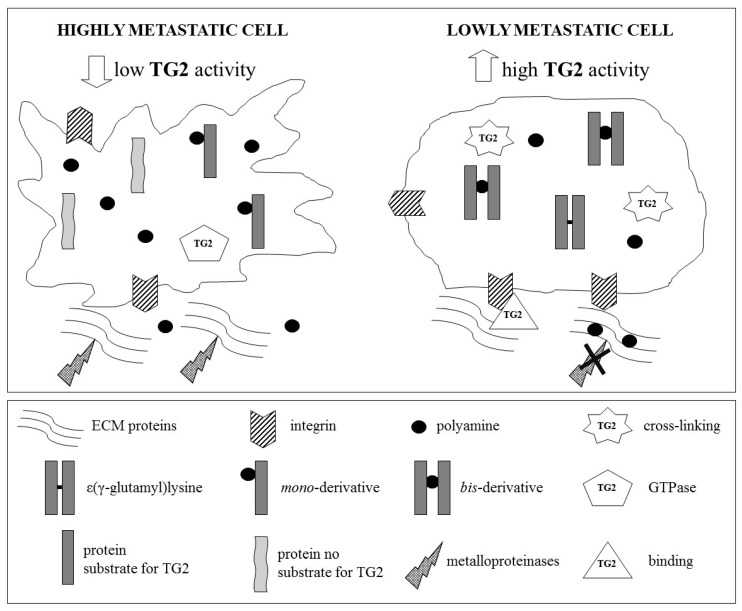Figure 2.
Tumor cells, with high metastatic potential, are characterized by high levels of intracellular polyamines and low transamidase activity of TG2. This condition favors the formation of mono-(γ-glutamyl) derivatives of polyamines, preventing polymerization of intracellular proteins, in particular, those components of the cytoskeleton. It follows that cellular plasticity is high, due to the reduction of cell–cell or cell–matrix interactions, which favors cell detachment and motility. By contrast, in cells with reduced metastaticity, the transamidase activity of TG2 is higher. Hence, the polymerization of intracellular proteins is increased by the favored formation of ε-(γ-glutamyl) lysine and bis-(γ-glutamyl) polyamine derivatives. Therefore, in these cells, the plasticity is reduced and the cell–matrix interactions, mediated by integrins and TG2, are more pronounced, due to the increase in cell adhesion with extracellular matrix (ECM) (modified from Lentini et al., 2013 [17]).

